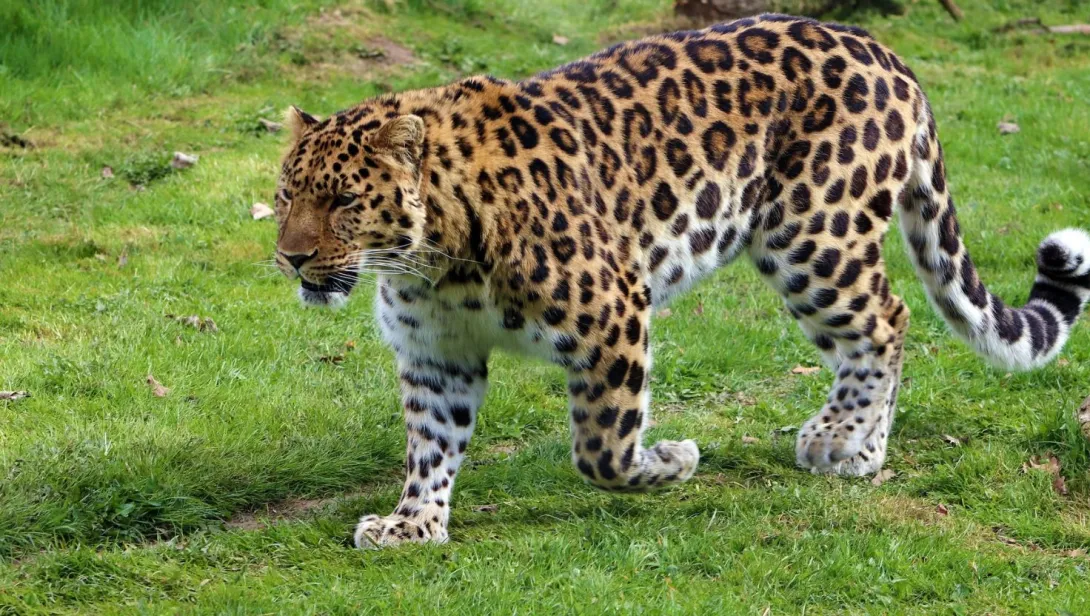Skip to main content
Introduction
- Leopards are large, powerful big cats scientifically known as Panthera pardus.
- They are known for their rosette-patterned fur, which provides excellent camouflage in their habitats.
- Leopards are highly adaptable and can thrive in a variety of environments, from forests to deserts.
Physical Characteristics
- Leopards have a muscular and agile body, with males weighing between 80 to 200 pounds (36 to 90 kg) and females slightly smaller.
- Their coat is covered in rosettes (rose-like spots), which are unique to each individual.
- Leopards have retractable claws and powerful jaws, making them skilled climbers and hunters.
- They are nocturnal animals, with excellent night vision for hunting in the dark.
Habitat and Distribution
- Leopards are found in sub-Saharan Africa, parts of Asia, and the Russian Far East.
- They inhabit a wide range of environments, including rainforests, savannas, mountains, and deserts.
- Leopards are solitary and territorial, marking their territory with scent markings and scratch marks on trees.
Diet and Hunting
- Leopards are carnivorous and hunt a variety of prey, including antelopes, deer, monkeys, and wild boar.
- They are stealthy hunters, relying on their camouflage and silent stalking to ambush prey.
- Leopards are strong climbers and often drag their prey up trees to avoid scavengers like lions and hyenas.
- They can carry prey twice their body weight up a tree.
Behavior and Communication
- Leopards are solitary animals, except during mating season or when a mother is raising her cubs.
- They communicate through vocalizations such as growls, roars, and sawing calls.
- Leopards are territorial and use scent markings and scratch marks to define their territory.
- They are nocturnal, spending most of the day resting in trees or dense vegetation.
Reproduction and Lifespan
- Female leopards give birth to 2 to 4 cubs after a gestation period of about 90 to 105 days.
- Leopard cubs are born blind and rely on their mother for protection and nourishment.
- Cubs stay with their mother for 18 to 24 months before becoming independent.
- Leopards have a lifespan of 12 to 17 years in the wild and up to 23 years in captivity.
Conservation Status
- Leopards are classified as Vulnerable on the IUCN Red List, with populations declining due to habitat loss and poaching.
- There are an estimated 50,000 to 70,000 leopards left in the wild.
- They are threatened by habitat destruction, human-wildlife conflict, and illegal wildlife trade.
- Conservation efforts include protected areas, anti-poaching measures, and community-based conservation programs.
Unique Adaptations
- Leopards are excellent climbers and often rest or store prey in trees.
- Their rosette-patterned fur provides camouflage in their natural habitats.
- Leopards have strong jaws and can crush the skulls of their prey.
- They are highly adaptable and can survive in both dense forests and arid deserts.
Cultural Significance
- Leopards are revered in many cultures as symbols of strength, courage, and stealth.
- They are featured in mythology, art, and literature across Africa and Asia.
- In some African cultures, leopards are associated with royalty and power.
Fun Facts
- Leopards can run at speeds of up to 36 mph (58 km/h).
- They are strong swimmers and are often found near water sources.
- Leopards are ambush predators, relying on stealth rather than speed to catch prey.
- They have a unique ability to adapt to different environments, from rainforests to urban areas.
- Leopards are highly elusive and are rarely seen in the wild.
- They are keystone species, playing a crucial role in maintaining ecosystem balance.
Threats to Leopards
- Habitat loss due to deforestation and urbanization is a major threat to leopards.
- Human-wildlife conflict often results in leopards being killed by farmers protecting livestock.
- Poaching for their fur and body parts is a significant cause of their decline.
- Climate change is altering their habitats, making it harder for them to find prey.
Conservation Efforts
- Protected areas and wildlife reserves have been established to safeguard leopard habitats.
- Anti-poaching initiatives and stricter wildlife protection laws have helped reduce illegal hunting.
- Community-based conservation programs work to reduce human-wildlife conflict.
- Global awareness campaigns highlight the importance of leopard conservation and encourage public support.
